The rail freight market is certainly a challenging sector at the moment. With the coal market declining and the UK steel industry in jeopardy, freight operators need to cast the net wider to find work.
At GB Railfreight, this has been happening for many years. The company celebrated its 15th anniversary on March 31, and in that time it has been able to grow through its ability to innovate.
It broke into the intermodal market, followed by coal, where it rapidly gained significant market share. In the past year the company has started operating passenger trains for Caledonian Sleeper, and it has picked up contracts in the London area for aggregates, resulting in the need to expand its operations and buy new kit.
Rather than rely on traditional traffic, GBRf has targeted new markets to find what could be achieved and is setting out to win this work.
Lee Armstrong is the company’s business manager for aggregates and rail services. The latter is the name given to the various stock moves required by rolling stock leasing companies (ROSCOs) and the train operating companies (TOCs), and is big business these days. It can also be tricky.
It may not sound like a big market, but it is… and it’s only set to get bigger, as Armstrong explains: “With investment from the Government there’s a lot of those unit moves to go after. The expectations on them are a little bit different as well, because it’s not your traditional rail market. For instance, today for a rail move due at 1300 the maintenance provider has told us ‘it’s going to come back tomorrow’.”
That was for a move from Doncaster to Scotland. And it created problems for GBRf because its staff were already on the move, and were only an hour away from the Yorkshire town when they were contacted and told to head back home.
How many of these jobs are ad hoc, with GBRf getting a phone call asking for something as soon as possible?
“We’ve got quite busy, so we’re not able to adapt that quickly, but it’s one of the things we’re trying to do,” Armstrong says.
Potentially there is a lot of work available - quotes of around £15 million worth of work are mentioned. GBRf has been working closely with all the major providers (ROSCOs, TOCs, maintenance providers and manufacturers) to find out what their needs are, and to understand any issues.
The latest edition of the Long Term Passenger Rolling Stock Strategy, released by the Association of Train Operating Companies in late March, suggests that an average of 17 new vehicles per week must be delivered between now and 2020 (RAIL 798). On top of that are the refurbishment deals that have to be placed - it all adds up to a lot of potential.
Armstrong adds: “It’s not the cost of the accounts of a train onto the network, it’s the cost of a whole workforce sat around for a week. Some of these areas (especially Southern where they’ll only move on a Saturday), if we don’t turn up it’s another week before that unit can move. That means there’s a whole team of 50 guys at Doncaster with no work to do, so Wabtec is picking up the bill. It’s huge money for them if we don’t deliver a train on time.”
This represents quite a departure for GBRf and its usual operating model. Usually one locomotive hauls one rake of wagons on a cycle until an exam is needed. The operator believes in ‘sweating its assets’ and working its staff hard - isn’t rail services a bit of a change to that? Doesn’t it put a bit of a strain on operations?
Armstrong nods: “It does a little bit, but the guys adapt to it pretty well. The drivers we put on this work, they’re drivers that enjoy it. They enjoy the flexibility - they’re not the kind of driver that likes to be on a set turn every day. They like that one day they’re going to Doncaster Wabtec, the next day they’re on a Sleeper, and the next on an intermodal train. And they’re quite adaptive - they don’t mind living in hotels.”
But while rail services is certainly one for the future, aggregates is for the here and now.
GBRf Managing Director John Smith has declared that the company is helping to build London - for example, it has contracts with Crossrail to operate construction trains and to move material to and from the city. It has also found strategic terminals and loading points around London to serve, and began a five-year deal last year with Aggregates Industries (AI) to serve quarries in Leicestershire and around London.
Clearly there is potential in this sector, too. Armstrong describes it as “huge”, adding: “We took a bit of a dent with SSI and again with Tarmac, because we wanted the Northern package, and that eroded about a third of what we already bid for. So we’re hoping to grow further into the market.”
Despite the apparent growth, recent Office of Rail and Road statistics showed that aggregates had dipped - of the seven principal freight commodities carried, it was one of five that had experienced recent decline. Was the collapse of SSI and the associated trains (limestone served the steelworks) behind that?
“It probably would be. We dropped three wagon sets and three locomotives on that,” says Armstrong.
However, every cloud has a silver lining - the sudden available capacity will enable GBRf to bid for other work. For example, the decline in coal allied to the rise in aggregates has led to GBRf converting coal wagons that are less than a decade old into aggregates hoppers.
Armstrong tells RAIL: “We’ve had one running around - we’ve been trialling it on an AI set in the North, close to where it’s been converted. We should see them out in July.”
What does this do for capacity?
“The aggregates hopper market is pretty stagnant. There’s not really a lot of growth area for that. There are some big fleets, probably ageing. With the demise of coal there have been loads of coal wagons that are no longer fit for purpose.”
Armstrong is leaving the business, with GBRf Head of Estates Liam Day taking on his aggregates work. Day is now GBRf business manager.
“At the minute I look after GBRf’s property interests, so it does fall hand in hand with aggregates,” he says.
Day’s previous job was about maintaining existing locations, finding new ones and work for them. Wellingborough was a prime example.
Ten years ago GBRf signed a deal with Metronet to operate infrastructure trains on the London Underground, as part of the ongoing renewals programme on the Tube. This meant the company needed strategic sites to stable trains and load material, and it identified Ferme Park and Wellingborough.
The latter had been a disused yard that was brought to life by the LU deal, but there was little work after that contract ended. Now a deal has been signed for Aggregates Industries material to move there from the Mendips.
Says Day: “It’s building on some work I’ve been doing over the last year with GBRf - looking for new locations that we can look to develop. It’s all about road to rail conversion where we can.”
One of his recent successes was the setting-up of Cricklewood as a terminal, which is already helping the business grow.
For Day, it has recently been a case of Armstrong trying to win work, and then him trying to find a location where GBRf can run into.
“There’s no use just having a siding,” he explains. “You need the land there, and the road access that’s required for it.”
Armstrong says that this work has highlighted concerns: “The work we’ve done together on that shows that land is quite an issue. Network Rail is trying to sell off large chunks of land. What were strategic freight sites are potentially going to be sold.”
Does that mean GBRf must act fast to submit an application to use the land, if it thinks the site offers potential?
“We do, but there’s other things you have to do. You’ll see with the strategic freight sites, at interchanges - that’s the sort of stuff that needs to be developed, almost to the point that we’re looking at commercial sites where there’s a rail connection next door to it. Is there anything we can do with that commercial site, like an industrial estate? But the problem with that is the land rents. In London, industrial estates are so high that trying to get things to stack up is quite difficult.”
Euston Downside is cited as an example. Says Day: “Because land in London is so scarce, from our perspective it would be silly to focus on finding a bit of land to supply just one job, and to work on one job.”
He highlights Cricklewood: “It’s brilliantly placed for the sort of traffic that we’re running, to be able to call on a number of jobs that would rely on Cricklewood as a location.”
Obviously GBRf is not just London-focused. Says Day: “It tends to be on the short-term side of things. Your aggregates and spoil operations are what you can focus on between now and (say) 18 months/two years down the line. The bigger intermodal-type locations, you need to take more of a strategic view - they take longer to come into fruition. So we have people who work on those in the company as well.”
How does Day see the aggregates market developing?
“There’s growth there. Of the markets we’re looking at growing, that is one of them. We try and strengthen our position as much as we can and look to facilitate any newcomers to the market.”
Is there interest from people new to rail?
“We’ve got quite a few enquiries, yeah,” he nods. “We have customers and suppliers either end - we’re just trying to find a package with the land, rail haulage and handling, and try and make it work for them.”
As for rail’s unique selling point against road right now, Day says that depends upon the product, and on the distance that product is being carried. That dictates the price.
“But also in London, it’s the local authorities pushing people away from lorries coming through London,” he adds.
It has been said previously within the freight industry that often a freight train needs journeys of 170 miles to 200 miles to be profitable. In the aggregates market, that can never be the case for journeys across London. Is there a distance in London below which it becomes unviable?
Armstrong explains: “It’s dependent on how much you can ‘sweat the assets’. You can do two trips per day. For instance, if it’s at Leeds and Hull, that locomotive and that set of wagons does two trains a day. It’s the same in London - if you can do two or three trips a day with the set of wagons to keep the stuff moving.”
That thinking is the reason why Ferme Park is being retained. Getting paths on the Midland Main Line is difficult, and Armstrong explains that the North London facility can be a strategic rail hub to increase the volume of through traffic, and for staging trains.
Armstrong gives an example of distance and ‘asset sweating’: “We’re looking at quite a long-distance journey for a new client. We can’t get a 24-hour rotation on a set of wagons, which is the killer for him. But we’ve said if we can do enough to fill two sets of wagons we can allocate more assets and stage them into Ferme Park to allow the contract to work.
“So although we don’t get a 24-hour rotation, we’ve got assets to do the equivalent over the week, and we can hit the timings. That’s the key - it’s about volume really. If you can get us some more volume, we can run it.
“With London you’ve got six hours a day (three in the morning and three in the evening) when you can’t run trains. That train has to stay somewhere, wait for the peak to go, and then go. If you have a staging point that means you can stage wagon sets.”
Is there anywhere else GBRf has identified?
“It’s finding them first!” replies Armstrong. “But it’s not just about looking where you’ve looked before, it’s about looking at different ways. If we can make a flow work based on loading or unloading on the line in some location, rather than putting in a brand new connection which amounts to a million pounds...”
Paul Taylor is GBRf’s business manager, charged with looking after the company’s vital National Supply Chain (NSC) contract. His role has also recently expanded. “I’m inheriting an awful lot of things when Lee goes,” he explains with a grin.
This includes the charters business. Taylor will have two staff looking after charters and rail services, two facets of the business that go hand in hand as both are a mixture of occasional workings and one-offs.
This is work that currently seems not to fit the GBRf way of one train being ‘sweated’. It is something completely different.
“In a way, they’re a good revenue stream because you have a mix,” says Taylor.
“You have the occasional one-offs - the locomotives for diesel galas. Maybe you will get a TOC train or locomotive once a year coming out of works after a collision repair Then you’ll get a regular flow of multiple units going through works, but they’ll only be once a fortnight or once a month.
“In some respects it’s a marginal operation, so you’re looking at what train crew assets you can sweat to do those instead. It’s still finding the best fit of the work that we do.”
The charters, rail services and one-off jobs also fit in with Taylor’s other project, which is to ensure that the Caledonian Sleeper operates. He manages the Caledonian Sleeper side of the business for GBRf.
“There are some synergies. You saw on March 12 with the ‘87’ .
“If we have capacity in the diagrams to re-use locomotives. There is a mix of the same blokes that are going to be doing it, so you have to manage the rosters very carefully to make sure we cover everything.”
GBRf employs a number of drivers who have a range of skillsets. They can drive Class 1 passenger trains, intermodals, engineers’ trains and empty stock moves. It is these men and women whom Taylor will look to help grow his side of the business.
“We’re looking at how we do our services because the amount of rail service stuff that there is out there, it almost lends itself now to being a link of men themselves.
“I still think on its own it’s very difficult to crack, because there’s also going to be the occasional two moves in one day, then nothing for three days. It’s really feast and famine. That’s where we’ve got the benefit. We’ve got a bigger base of crews so we can manage the peaks and troughs better. And with other things going on in the charter train market, we’ve seen a sudden growth.”
Taylor denies that this is as a result of the prohibition order placed on West Coast Railway Company by the Office of Rail and Road, and which was lifted on March 23 (RAIL 798).
“I just noticed there’s a sudden interest in using GB Railfreight for charters. We’ve been asked to do a couple for Pathfinder Tours because we have some locomotives down there .
“In August we’re doing Lymington with Class 20s. I took that request because they specifically wanted those ‘20s’. We’ve got the traction knowledge and route knowledge, we’re just sharing the work.”
GBRf is also taking Class 73s to Paignton in July. Taylor explains: “That’s something I’ve been wanting to do for years. That’s my fault. John Farrow loves the fun trains. I said I’d like to do this. He saw it as something that will work for him. So we’re happy to do that.”
Long-term, does GBRf see itself as a major charter operator? Taylor’s answer is a categorical ‘yes’.
“We’ve organically grown around the country. We’ve historically done stuff within our base. We’ve been selective in the past when someone has come to us and asked ‘can we run this charter?’ If it sits within our portfolio of route knowledge and traction knowledge, then we will consider it.
“You could argue that where the freight market has changed and there’s been sub-contraction, that has given us some more capacity, so we’ve felt more confident to take things on.”
But that does not mean other aspects of the business will be neglected.
“We won’t take anything on unless we know we can do it,” says Taylor. “There’s nothing worse for a charter operator than for you to say ‘on Saturday we’re going to get 600 people from A to B’, and you don’t deliver it on the day. You can’t do that.”
Taylor explains: “There must always be a business case. Particularly in the past, whenever we’ve done a charter, I’ve sometimes had to justify why we’re doing it. I always can, and there’s always been the question about ‘playing trains’.
“At the enquiry stage, we check against known work. If it is a particularly busy weekend for Network Rail, I could tell you if I think there’s a risk that something’s going to give. Nobody could ever be forgiven for taking on a train and disappointing 600 people, or for a Network Rail possession overrun because we didn’t deliver. We wouldn’t do that.”
Taylor’s job also involves managing the National Supply Chain contract for GBRf, so he must balance that with the charters.
“Interestingly, from a ‘number of trains’ perspective, it is quieter at the moment. It has been over the last couple of years. There is a current reduction of maintenance and renewal trains. When Network Rail had that determination on the finances under this Control Period, it cut back on what it does. And that’s been reflected across the haulage - all the hauliers are seeing less than the previous Control Period.”
With Network Rail Chairman Sir Peter Hendy talking about cutting back even further, does Taylor believe that charters and rail services can offset the reduced NSC work?
“The charter market is about tapping into organic growth we already have. From Network Rail’s point of view we’ve grown rather than contracted. Although the work’s less, we’ve still grown. So I think what he’s saying is our portion of the market has grown. That creates more organic growth opportunities elsewhere.”
With the Caledonian Sleeper contract GBRf has faced a number of challenges, including reliability, diversions and the collapse of Lamington Viaduct (RAIL 793). What other challenges does Taylor expect?
“To be honest with you, provided we don’t have another Lamington, it’s relatively manageable because you’ve got the Network Rail planning process. So you know about your diversions in advance. There’s a negotiation. If they say ‘they want to blockade at B’, you say ‘can you only block it to C, because you want to run this way’. Sometimes you have to give, but it’s more than manageable as it’s a plan-on-plan basis. If there is another Lamington, we’ll just see what we can do at the time - rise to the challenge.”
Where does he see the markets in the future?
“With Network Rail, the level of work they’re at, I think that will be maintained where it is. We need to make sure we stay in the game, at least at the same level that we are doing now. We’ll do that by doing what we do now.
“I’d like to say that we’d just quietly get on with it. We don’t generally have dramas at the weekend. You might occasionally - the other operators here may need some drivers to come in for the weekend. We’ll do what we can with all operators, and we’ll step into the mix when there’s a problem. But I’d like to think we don’t have those dramas when we’re setting up.
“We try to keep on top of the route learning if there’s a particular area - an odd branch line, for example. Just by day-to-day delivery, the fact that our drivers are helpful, that the contractors do like us because when something goes wrong they’ll step up and help, that always helps.
“As for the Sleepers, we’re in it for 15 years. I’d like to think, responding as we did to Lamington, providing the service.
“We like to think that other operators would have gone ‘oh that’s too much, we’re going to lose that train’. That’s always been our strength… responding. You know some of the people we have are characters, and we’re enthusiastic. It’s almost as if we like putting our pants on outside our trousers sometimes!”
- This feature was published in RAIL 799 on April 27 2016.

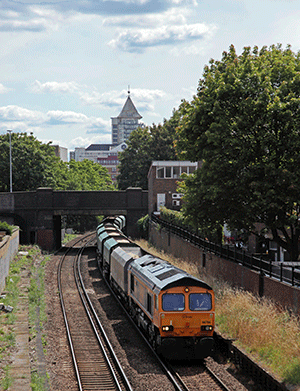
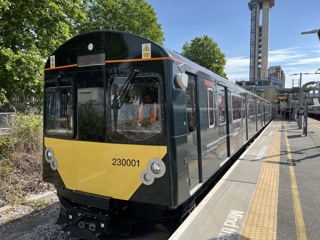
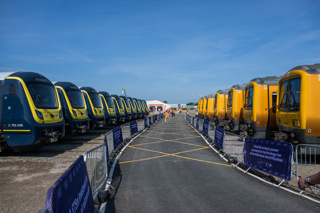
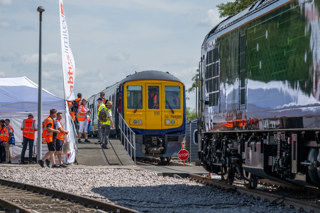
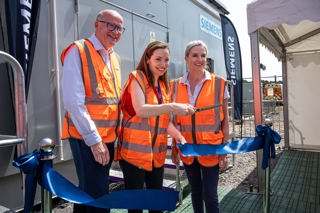
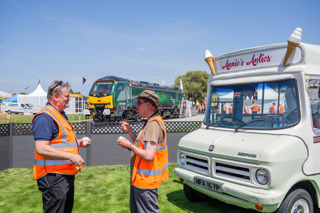











Login to comment
Comments
No comments have been made yet.